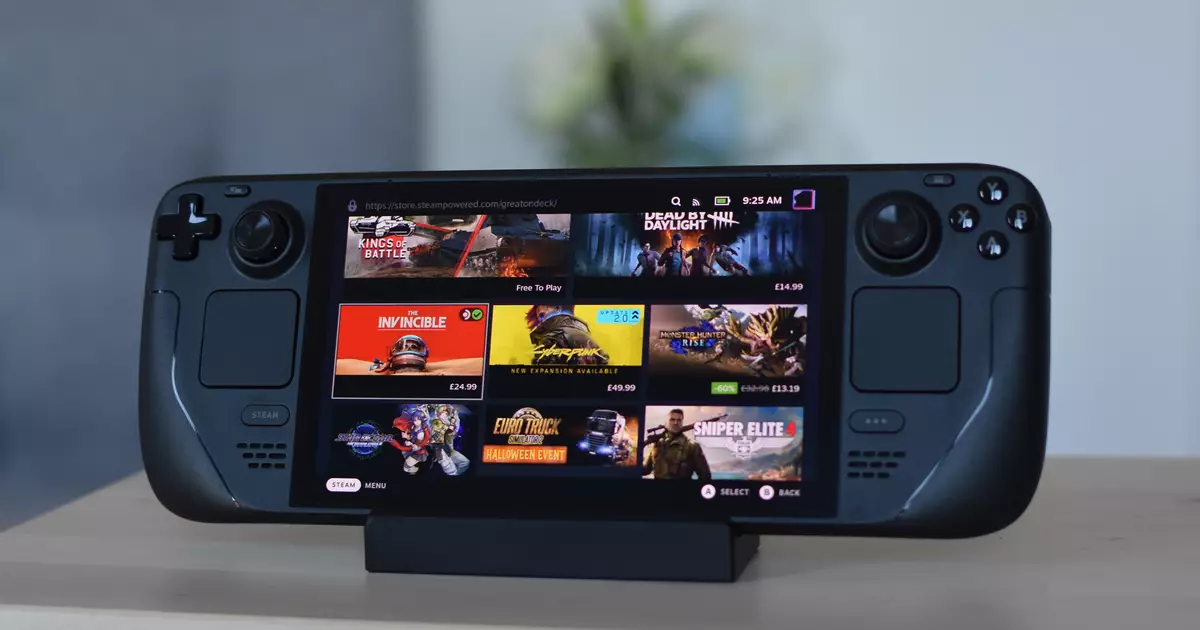According to a report from NotebookCheck, Valve appears to be gearing up for another foray into hardware development. This news comes on the heels of their previous hardware ventures, which include the Valve Index and the Steam Deck series. What sets this potential new project apart is the possibility of Valve swapping the x86 architecture that has long dominated PC gaming for ARM-based processors, akin to those utilized in devices like the Nintendo Switch and Apple’s latest Mac models. This shift could have significant implications for both Valve’s hardware and the broader gaming ecosystem.
An examination of SteamDB reveals intriguing insights into Valve’s potential plans. The introduction of a software item titled ‘ValveTestApp3043620’ raises eyebrows due to its association with a variety of popular PC titles such as “Left 4 Dead 2” and “Among Us.” The tags linked to this application suggest an experimental version of Proton that supports ARM64 architectures. Proton is a critical compatibility layer that allows numerous Windows games to run seamlessly on the Linux-based SteamOS. Analyzing these tags implies that Valve may be experimenting with providing compatibility for a variety of games on ARM systems, which leads to questions about their ultimate intentions.
While the most straightforward interpretation could be that Valve is considering launching SteamOS for Apple’s M-series devices, the implications of expanding into ARM architecture could go deeper. If Valve decides to target new hardware incorporating ARM, it could redefine the capabilities and performance of their offerings. The potential benefits of ARM processors—namely, power efficiency—could lend themselves well to enhanced gaming experiences, particularly in mobile or VR formats.
Moreover, an ARM-based system could simplify the integration of mobile games with the PC platform. Currently, limited compatibility exists for mobile games on traditional x86 hardware. By embracing ARM, Valve could break down existing barriers and create a more unified gaming experience. However, capitalizing on these possibilities is complex and requires careful navigation of potential hurdles.
Transitioning to ARM brings its unique set of challenges, particularly concerning the performance and compatibility of existing PC games. Although modern ARM chips exhibit capabilities comparable to their x86 counterparts, a significant portion of gaming infrastructure is built predominantly for x86 systems. This disparity raises the specter of performance issues that could arise from running x86-based games on an ARM architecture, where emulation may be necessary.
The idea of maintaining optimal performance levels while simultaneously achieving compatibility is a delicate balance. Emulation tends to be resource-intensive and could hinder the fluid experience that gamers expect. Valve’s experience with Proton shows a significant commitment to overcoming such hurdles, suggesting hope that they can innovate and adapt their offerings to deliver a competitive product. Yet, skepticism remains about how effective these solutions can be when applied to a fundamentally different architecture.
Despite Valve’s assertions that a next-generation Steam Deck could be years away, the prospect of an ARM-powered device remains tantalizing. The possibility of a standalone VR headset powered by ARM architecture could offer a marriage of portability and performance that appeals to gamers seeking high-quality experiences on the go. Nevertheless, it’s essential to consider how these development paths may reflect broader trends in the tech industry, where ARM is increasingly finding its way into advanced computing contexts.
The notion of a new generation of Steam Machines could also make a return, bringing a fresh take on gaming hardware that incorporates the advantages of ARM processors. This move would not only benefit Valve but could also play an influential role in shaping the future of gaming.
Valve’s potential shift toward ARM architecture signifies both opportunities and challenges. While there are promising prospects for improved power efficiency and accessibility to a broader gaming library, the road ahead is fraught with complexities that require innovative solutions. As Valve explores these possibilities, the gaming community watches closely, eager to see how these developments unfold and ultimately shape the future of gaming hardware. The outcomes could redefine not just Valve’s hardware strategy but also the ground rules for how we define gaming experiences in coming years.

